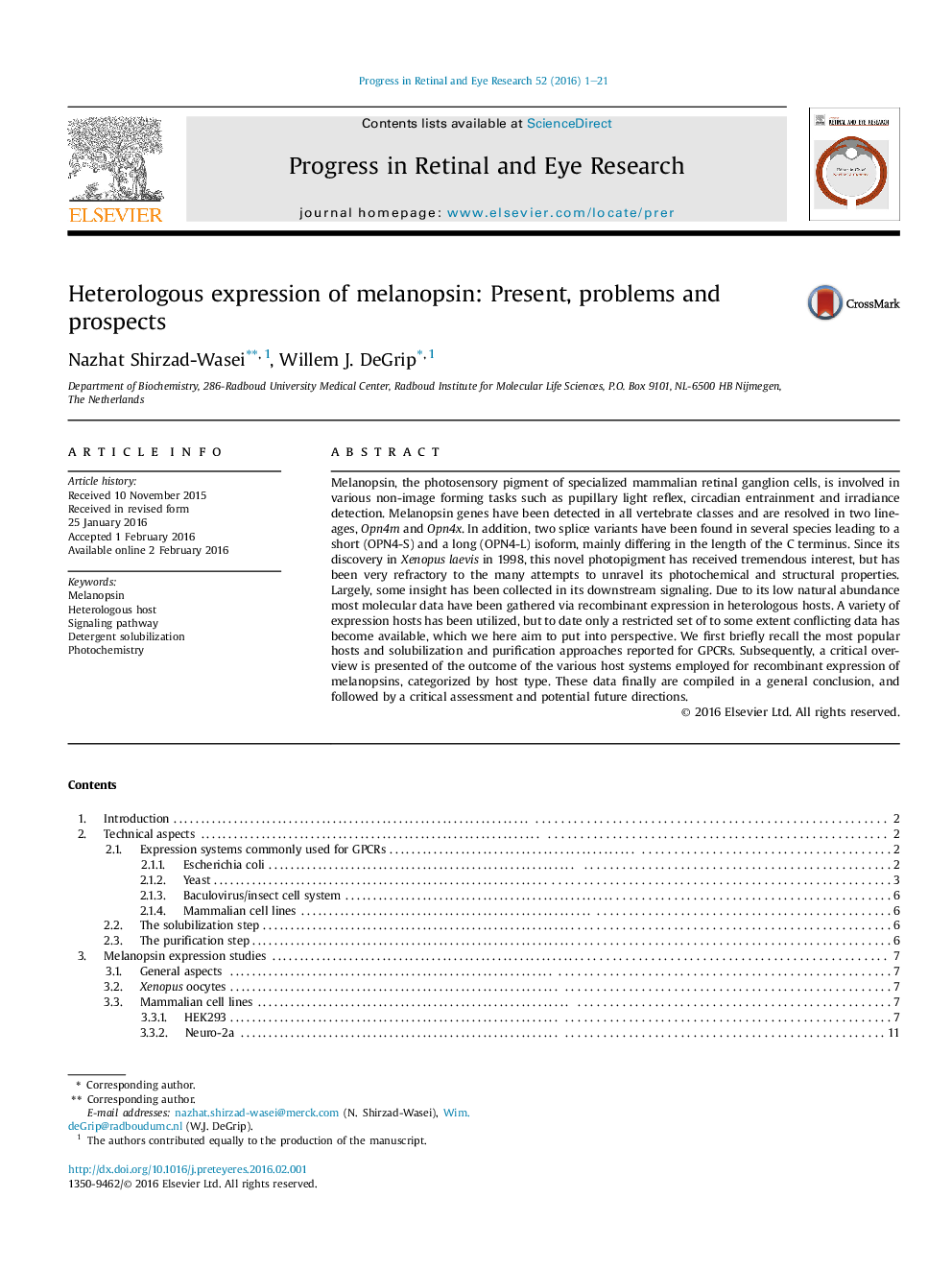| Article ID | Journal | Published Year | Pages | File Type |
|---|---|---|---|---|
| 6202685 | Progress in Retinal and Eye Research | 2016 | 21 Pages |
Melanopsin, the photosensory pigment of specialized mammalian retinal ganglion cells, is involved in various non-image forming tasks such as pupillary light reflex, circadian entrainment and irradiance detection. Melanopsin genes have been detected in all vertebrate classes and are resolved in two lineages, Opn4m and Opn4x. In addition, two splice variants have been found in several species leading to a short (OPN4-S) and a long (OPN4-L) isoform, mainly differing in the length of the C terminus. Since its discovery in Xenopus laevis in 1998, this novel photopigment has received tremendous interest, but has been very refractory to the many attempts to unravel its photochemical and structural properties. Largely, some insight has been collected in its downstream signaling. Due to its low natural abundance most molecular data have been gathered via recombinant expression in heterologous hosts. A variety of expression hosts has been utilized, but to date only a restricted set of to some extent conflicting data has become available, which we here aim to put into perspective. We first briefly recall the most popular hosts and solubilization and purification approaches reported for GPCRs. Subsequently, a critical overview is presented of the outcome of the various host systems employed for recombinant expression of melanopsins, categorized by host type. These data finally are compiled in a general conclusion, and followed by a critical assessment and potential future directions.
